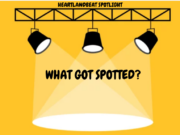Coming Events
Dec. 8, 5:30 p.m., Field to Market Workshop, Extension Office, 1340 G Street, Geneva, NE Field to Market.
Jan. 8, 8:30 a.m., Crop Production Clinic, Holthus Convention Center, York. Registration at: http://agronomy.unl.edu/cpc.
Jan. 13-14, York Ag Expo, Holthus Convention Center, York http://yorkagexpo.com/
Field Assessments To Improve Efficiency Workshops Â
I would really like to encourage area corn and soybean producers to consider attending one of the series of meetings planned for area farmers use a new web based tool called the Fieldprint® Calculator. Calculating “Fieldprints” can help you establish benchmark data on a field and track improvements overtime, set energy saving and efficiency goals and compare performance against other local, state, and national benchmarks.
The Fieldprint Calculator is relatively easy to use, though the technology behind it is complex. The new field assessment initiative led by Nebraska Extension is a hands-on workshop and participating growers will take home documentation on eight sustainability and efficiency indicators. These measures are Land Use, Conservation, Soil Carbon, Irrigation Water Use, Water Quality, Energy Use, Greenhouse Gas Emissions and Water Quality. Participants will select a representative crop field and complete a data input sheet in advance of the Fieldprint® Calculator workshops. Meals and workshop materials are sponsored thanks to a University of Nebraska Extension Innovation grant.
Computer laptops will be provided to participants but you can bring your own if you’d rahter. The workshop instructors include a core team of University of Nebraska Extension Educators, Specialists and local facilitating Extension Educators. I hope to be assisting at a few of the workshops.
Workshops will be held Dec. 7th in Lincoln and Beatrice; Dec. 8th in Auburn and Geneva; Dec. 9th in Clay Center and Central City; Dec. 10th in Fremont and Dec. 11th at the ARDC near Mead. For more information about the locations or to register, go to Field to Market. Please register by Dec. 3. Give me a call if you have questions about these workshops.
Nebraska Soybean Day & Machinery Expo
The annual Nebraska Soybean Day and Machinery Expo will be held Dec. 17 at 8:30 a.m. and conclude at 2:15 p.m., in the pavilion at the Saunders County Fairgrounds in Wahoo.
The expo opens with coffee, doughnuts and the opportunity to view equipment and exhibitor booths. Speakers start at 9 a.m.
Presenters include UNL researchers and specialists, Nebraska Soybean Board representatives, soybean growers and private industry representatives.
•David Kohl, professor emeritus agricultural economics, Virginia Tech University will present on “Megatrends in Agriculture and Global Economics, How it Impacts Nebraska Farmers.”
•Tina Barrett, executive director, Nebraska Farm Business Association will discuss “Nebraska’s Farm Financial Outlook.”
•John Frihauf, field biologist Sr., BASF, will present on “Management of Herbicide Resistant Weeds: Combatting Waterhemp, Palmer Amaranth, and Marestail”
•Keith Glewen, Nebraska Extension educator, will present information on the Nebraska On-Farm Research Network in “Discovering Production Answers On Your Farm, What Could be New in Your Tool Box?â€
The Saunders County Soybean Growers Organization requests that each participant donate one or more cans of nonperishable food to the food pantry.
Complimentary noon lunch will be served.
The program is free and registration will be at the door. For more information about the program or exhibitor information, call (800) 529-8030 or e-mail kglewen1@unl.edu.
This program is sponsored by Nebraska Extension in the university’s Institute of Agriculture and Natural Resources, the Nebraska Soybean Board, Saunders County Soybean Growers Organization and private industry.
Corn Stalks Feed Value
It’s good to see cattle out in many of our area corn fields utilizing cornstalks and adding value to our local economy. Bruce Anderson prepared a short article in the latest issue of CropWatch indicating that if you’ve bailed stalks it’s important to test them for feed quality.Â
Bruce indicated that you should “Begin by testing the bales for protein and energy. You may be surprised at how variable the protein and energy content can be in corn stalk bales. I’ve seen protein as low as 3% and as high as 7%. Dry pregnant cows need 7-8% protein in their diet so high protein bales will need only a little protein to adequately care for the cows; however bales with 3% protein will need quite a bit of supplement to keep cows in good condition.
Use a protein supplement that is nearly all natural and is mostly rumen degradable. Maintenance-level forage diets need degradable protein for the rumen microbes. Remember that urea and other non-protein nitrogen sources aren’t used as well.â€
Many bales have pretty good TDN levels, nearly 60%. Cows fed these bales should do very well up until calving with just corn stalk bales and adequate protein supplement. However, stalks rained on before baling can be below 50% TDN. Cows fed these lower quality bales will need some extra energy, too. If your bales came from stressed stalks, like from drought or hail, also get a nitrate test to be sure they are safe.â€
Crop Production Clinics Planned
This week I will be finalizing dates for pesticide safety education programs (PSEP) that I will be conducting in February and March, so if you need to be re-certificated, watch for those dates. Area producers that need to re-certified will receive a letter from our office in mid to late December.Â
Producers can also become certified by attending an area Crop Production Clinic. We will be hosting one on January 8th at the Holthus Convention Center, York.Â
A few of the topics will include:
What does it take to produce 80 bu/ac soybean routinely?
How can you control glyphosate-resistant weeds?
What can you do to delay corn rootworm resistance on your farm?
Where is the safety in the farm income safety net?
What are the truths and the legends of cover crops?
How can you employ climate-resilient irrigation systems?
For more information or to register: http://agronomy.unl.edu/cpc. I will share more of the specific topics in some of my future columns.
































